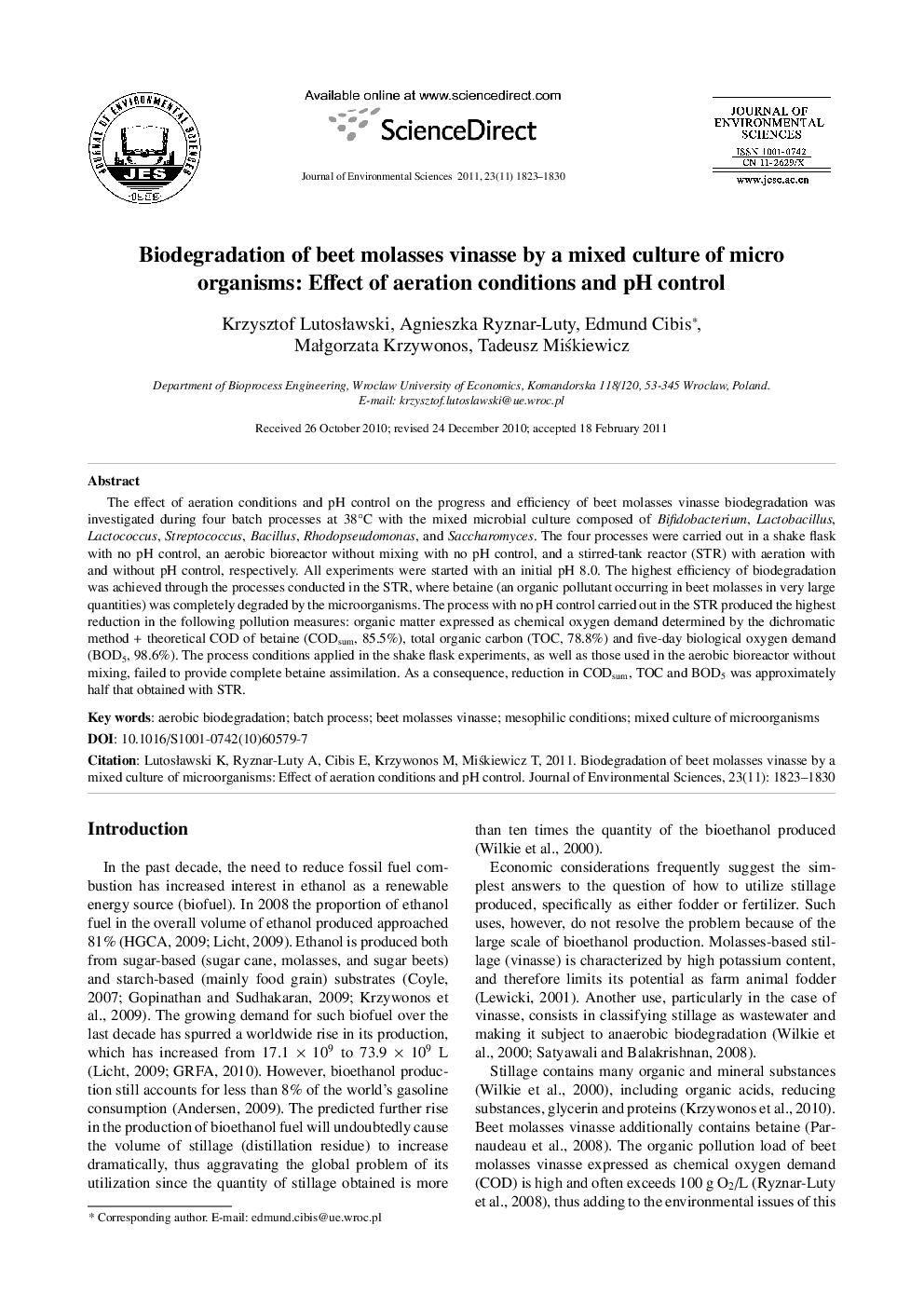| کد مقاله | کد نشریه | سال انتشار | مقاله انگلیسی | نسخه تمام متن |
|---|---|---|---|---|
| 4455339 | 1312514 | 2011 | 8 صفحه PDF | دانلود رایگان |

The effect of aeration conditions and pH control on the progress and efficiency of beet molasses vinasse biodegradation was investigated during four batch processes at 38°C with the mixed microbial culture composed of Bifidobacterium, Lactobacillus, Lactococcus, Streptococcus, Bacillus, Rhodopseudomonas, and Saccharomyces. The four processes were carried out in a shake flask with no pH control, an aerobic bioreactor without mixing with no pH control, and a stirred-tank reactor (STR) with aeration with and without pH control, respectively. All experiments were started with an initial pH 8.0. The highest efficiency of biodegradation was achieved through the processes conducted in the STR, where betaine (an organic pollutant occurring in beet molasses in very large quantities) was completely degraded by the microorganisms. The process with no pH control carried out in the STR produced the highest reduction in the following pollution measures: organic matter expressed as chemical oxygen demand determined by the dichromatic method + theoretical COD of betaine (CODsum, 85.5%), total organic carbon (TOC, 78.8%) and five-day biological oxygen demand (BOD5, 98.6%). The process conditions applied in the shake flask experiments, as well as those used in the aerobic bioreactor without mixing, failed to provide complete betaine assimilation. As a consequence, reduction in CODsum, TOC and BOD5 was approximately half that obtained with STR.
Journal: Journal of Environmental Sciences - Volume 23, Issue 11, November 2011, Pages 1823-1830